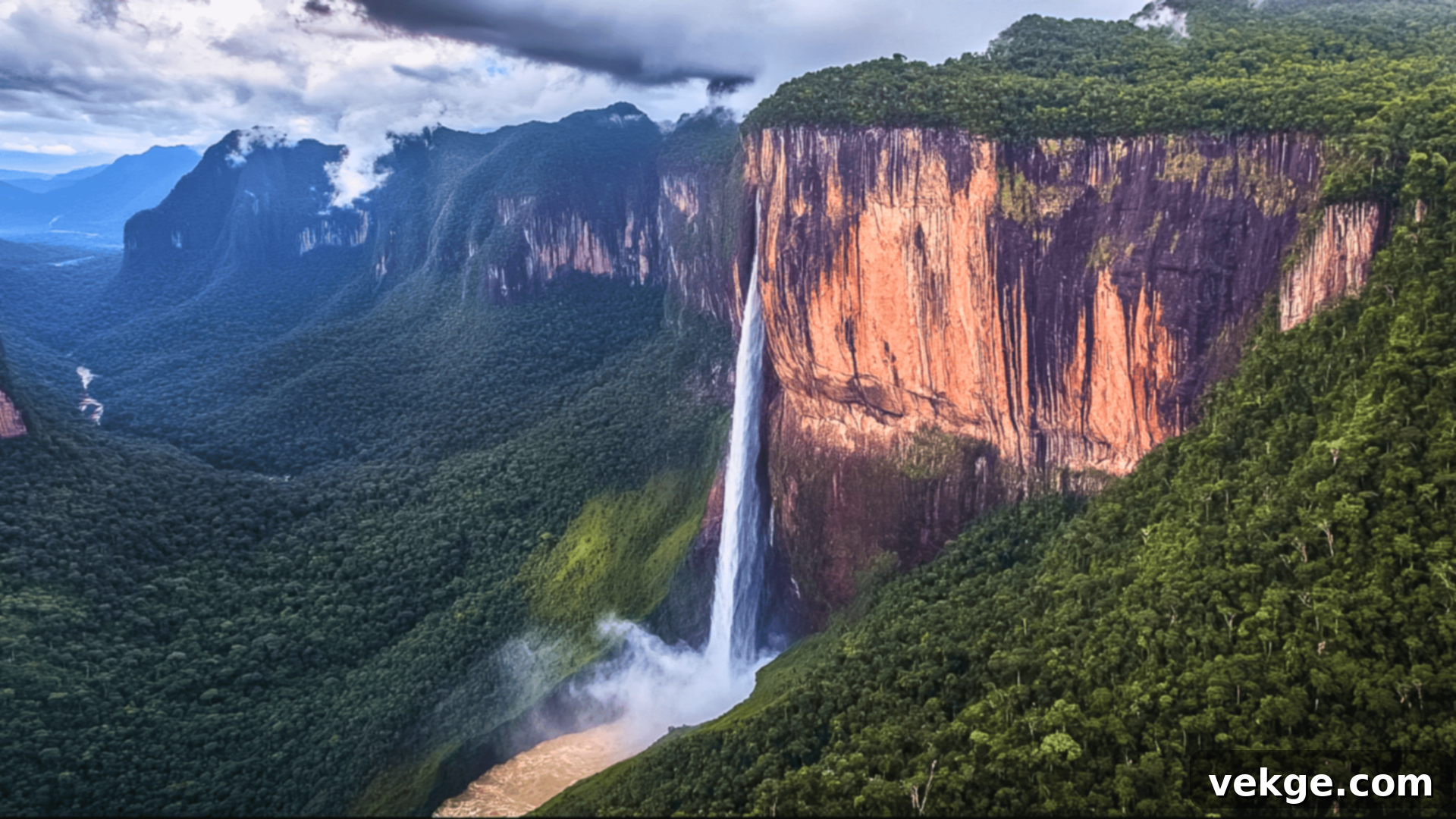Discover the Best Landmarks in Venezuela: Top Natural Wonders & Historical Sites
Venezuela, a country of unparalleled natural beauty and profound historical significance, boasts an array of captivating landmarks. From the towering peaks of the Andes to the pristine shores of the Caribbean, and from ancient geological formations to monuments honoring its fight for independence, Venezuela offers a diverse tapestry of experiences for every traveler.
Whether you’re an avid adventurer planning your next expedition, a history enthusiast eager to delve into South American heritage, or simply fascinated by stunning landscapes and architecture, this guide is your gateway to the most iconic destinations. We’ll explore the must-see attractions that define Venezuela, providing insights into their unique stories, cultural importance, and practical tips for your visit.
Prepare to be inspired as we journey through breathtaking natural wonders like the world’s tallest waterfall, Angel Falls, and immerse ourselves in the rich history of sites such as Simón Bolívar’s Birthplace House. Each landmark on this carefully curated list reveals a crucial facet of Venezuela’s identity, inviting you to connect with its vibrant past and awe-inspiring present.
Are you ready to uncover the beauty, history, and cultural richness embedded within Venezuela’s most remarkable landmarks? Keep reading to explore these extraordinary destinations!
Why Venezuela’s Landmarks Matter
Venezuelan landmarks are far more than just tourist attractions; they are integral to the nation’s identity, reflecting its tumultuous history, vibrant culture, and astonishing natural diversity. These sites serve as powerful reminders of the past, celebrated symbols of national pride, and vital ecosystems supporting incredible biodiversity.
From the majestic cascades of Angel Falls, plummeting from ancient tepuis, to the serene, crystal-clear waters of the Los Roques Archipelago, Venezuela’s landscapes are a testament to Earth’s artistic prowess. The country’s topography includes everything from dramatic mountains and lush rainforests to expansive savannas and sun-kissed beaches, all punctuated by historical monuments that stand as silent witnesses to centuries of human endeavor.
Each landmark holds a unique narrative. For instance, Simón Bolívar’s Birthplace House stands as a poignant shrine to the “Liberator,” commemorating Venezuela’s arduous struggle for independence and the ideals that shaped a continent. In contrast, the ancient, flat-topped Mount Roraima has captivated explorers and inspired literary masterpieces, its ethereal landscape hinting at a world untouched by time.
Visiting these landmarks offers an unparalleled opportunity to engage with Venezuela’s soul. It’s not merely about admiring picturesque views; it’s about understanding the geological forces that shaped these natural wonders, appreciating the architectural marvels built by human hands, and connecting with the profound stories of resilience and triumph that have defined the Venezuelan spirit. Such journeys provide a deeper, more personal understanding of the country’s rich tapestry of history, culture, and its enduring connection to nature.
Must-See Landmarks in Venezuela
1. Angel Falls (Salto Ángel)
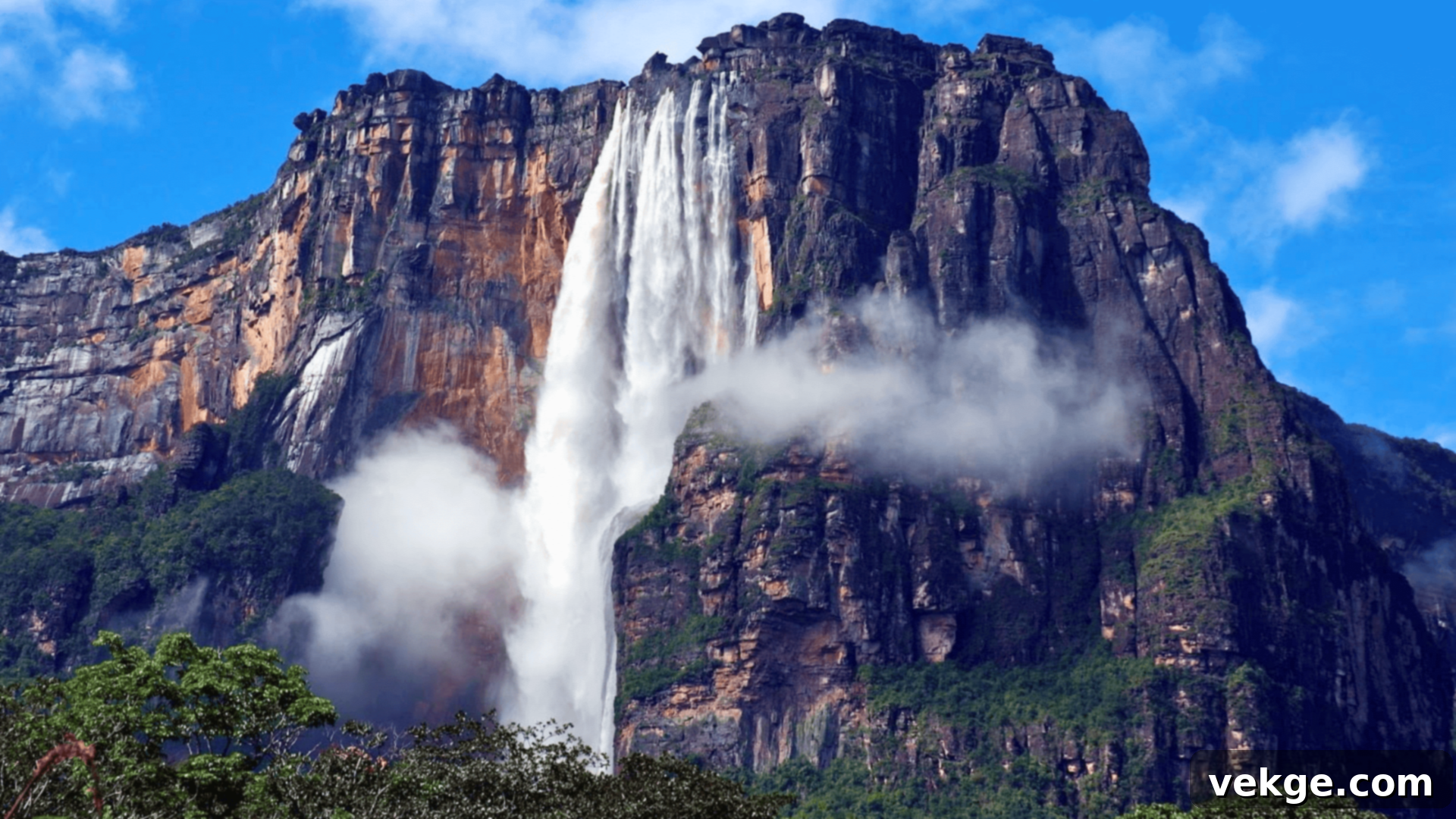
Nestled deep within the magnificent Canaima National Park, Angel Falls reigns as the world’s tallest uninterrupted waterfall. Plunging an incredible 979 meters (3,212 feet) from the Auyantepui plateau, its sheer scale is awe-inspiring. Named after Jimmy Angel, the American aviator who first flew over it in 1933, the falls create a mesmerizing spectacle as water transforms into mist before reaching the rainforest floor. The journey to the falls, often involving a combination of small planes, canoes, and jungle treks, is an adventure in itself, revealing the raw, untamed beauty of Venezuela’s Gran Sabana region.
Best Times to Visit: To experience Angel Falls at its most spectacular, plan your trip during the wet season, from May to November, when the water flow is strongest and the surrounding vegetation is lush. However, the dry season (December to March) offers clearer skies, making it more favorable for air travel and hiking conditions, though the falls might have slightly less volume.
Visiting Hours: There are no set visiting hours for the falls themselves, as access is primarily through guided tours that typically involve multi-day expeditions. It’s crucial to visit during daylight hours for safety and to fully appreciate the natural wonder, with tours usually starting early morning.
2. Los Roques Archipelago
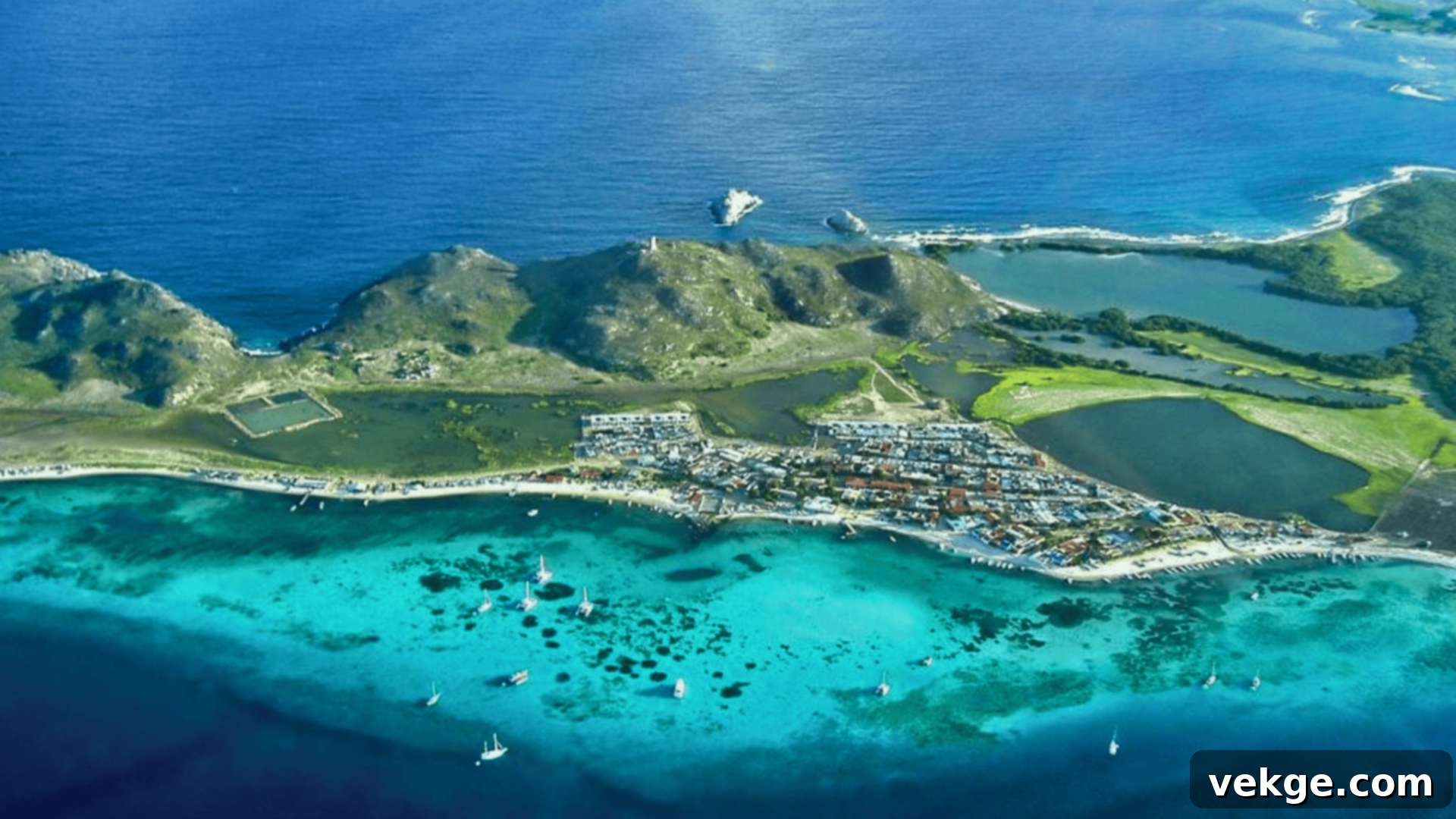
The Los Roques Archipelago is a breathtaking collection of over 300 islands, cays, and islets, renowned for its dazzling white-sand beaches, incredibly clear turquoise waters, and vibrant coral reefs. As a protected national park, it stands as a jewel of biodiversity, offering a serene escape and a paradise for marine life. It’s a premier destination for a variety of water sports, including snorkeling, diving, kite surfing, and sailing, allowing visitors to explore its rich underwater world or simply relax on its pristine shores. The tranquil atmosphere and stunning natural beauty make Los Roques an unforgettable Caribbean experience.
Best Times to Visit: The dry season, spanning from December to April, is considered the ideal time to visit Los Roques. During these months, the weather is consistently sunny with calm waters, perfect for all beach and water-based activities.
Visiting Hours: As an open destination, Los Roques does not have specific visiting hours for the archipelago itself. However, most visitors arrive via charter flights or boats, with daily excursions to various cays operating throughout the day, typically from morning until late afternoon.
3. Mount Roraima

Towering majestically in the Gran Sabana region, Mount Roraima is one of the most iconic tepuis (tabletop mountains) in the world. Its sheer, 400-meter-high cliffs and flat summit create an ancient, otherworldly landscape that famously inspired Sir Arthur Conan Doyle’s classic novel, The Lost World. The summit, accessible through challenging guided hikes, is a unique ecosystem with endemic flora and fauna, often shrouded in mist and dotted with crystal formations and natural pools. Reaching the top offers a profound sense of accomplishment and unparalleled views of a truly primeval world.
Best Times to Visit: While trekking is possible year-round, the dry season from May to September generally offers more favorable conditions. Less rain means clearer paths and slightly less mud, although Roraima’s summit frequently experiences rain and fog regardless of the season, adding to its mystique.
Visiting Hours: There are no specific visiting hours for the mountain. Access is strictly via guided expeditions, which are essential due to the challenging terrain and remote location. Trips typically span 6 to 8 days, including travel to the trailhead and the multi-day ascent and descent.
4. National Pantheon (Panteón Nacional)
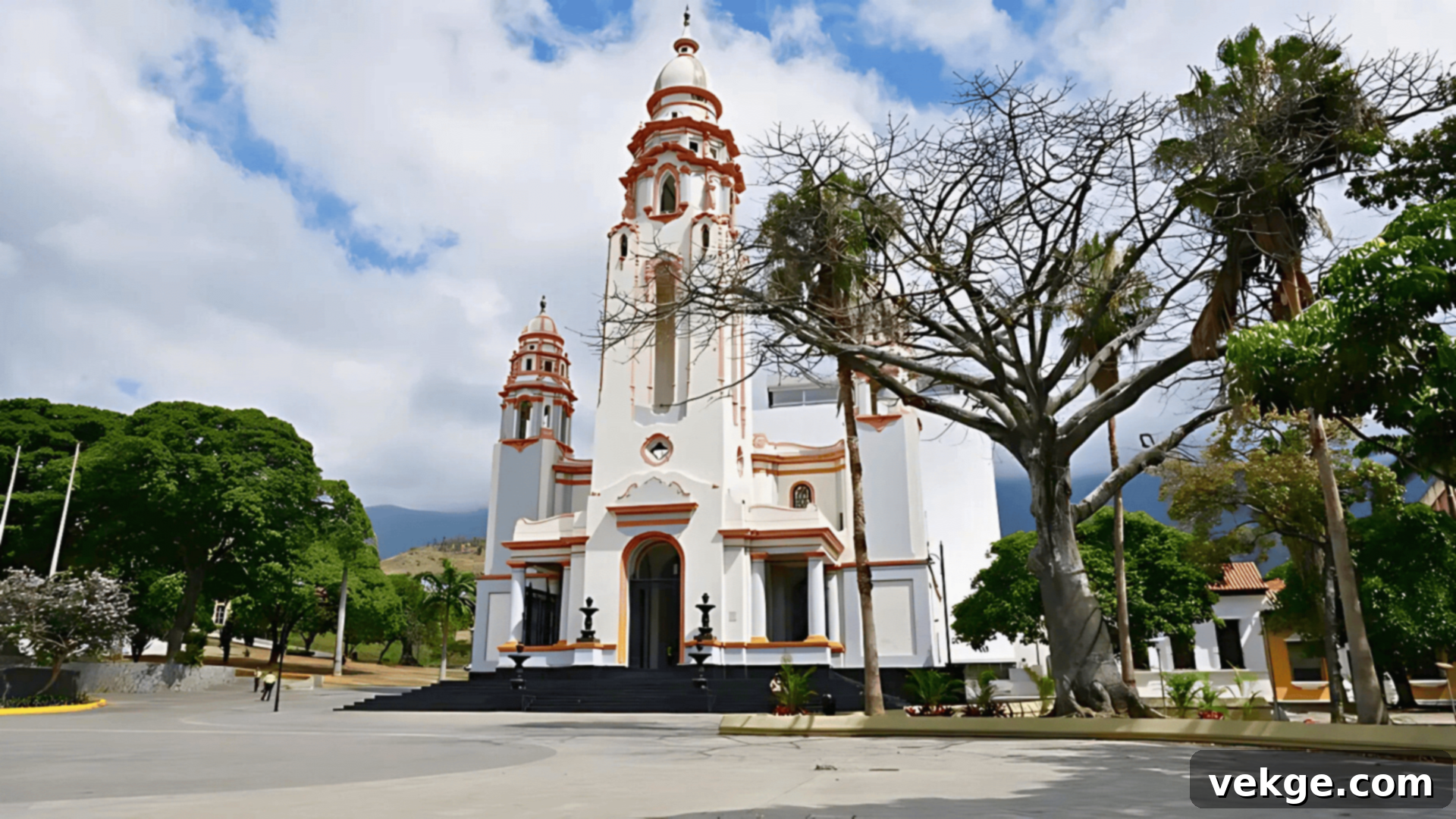
Located in the heart of Caracas, the National Pantheon stands as Venezuela’s most revered secular shrine. This grand neoclassical building is the final resting place of the country’s national heroes, most notably Simón Bolívar, whose sarcophagus lies beneath the central dome. Originally a church, it was converted into a Pantheon in 1874 and serves as a powerful symbol of Venezuelan independence and national identity. Visitors can admire its impressive architecture, elaborate murals depicting key historical events, and pay respects to the figures who shaped the nation.
Best Times to Visit: The Pantheon is a year-round attraction. However, for more comfortable weather conditions, visiting during the dry season from December to April is recommended, as Caracas can be quite warm and humid during other months.
Visiting Hours: The National Pantheon is generally open to the public from Monday to Saturday, typically from 9:00 AM to 4:00 PM. It may have extended hours or special events on significant national holidays, offering free entrance on certain occasions.
5. Simón Bolívar Birthplace House (Casa Natal de Simón Bolívar)
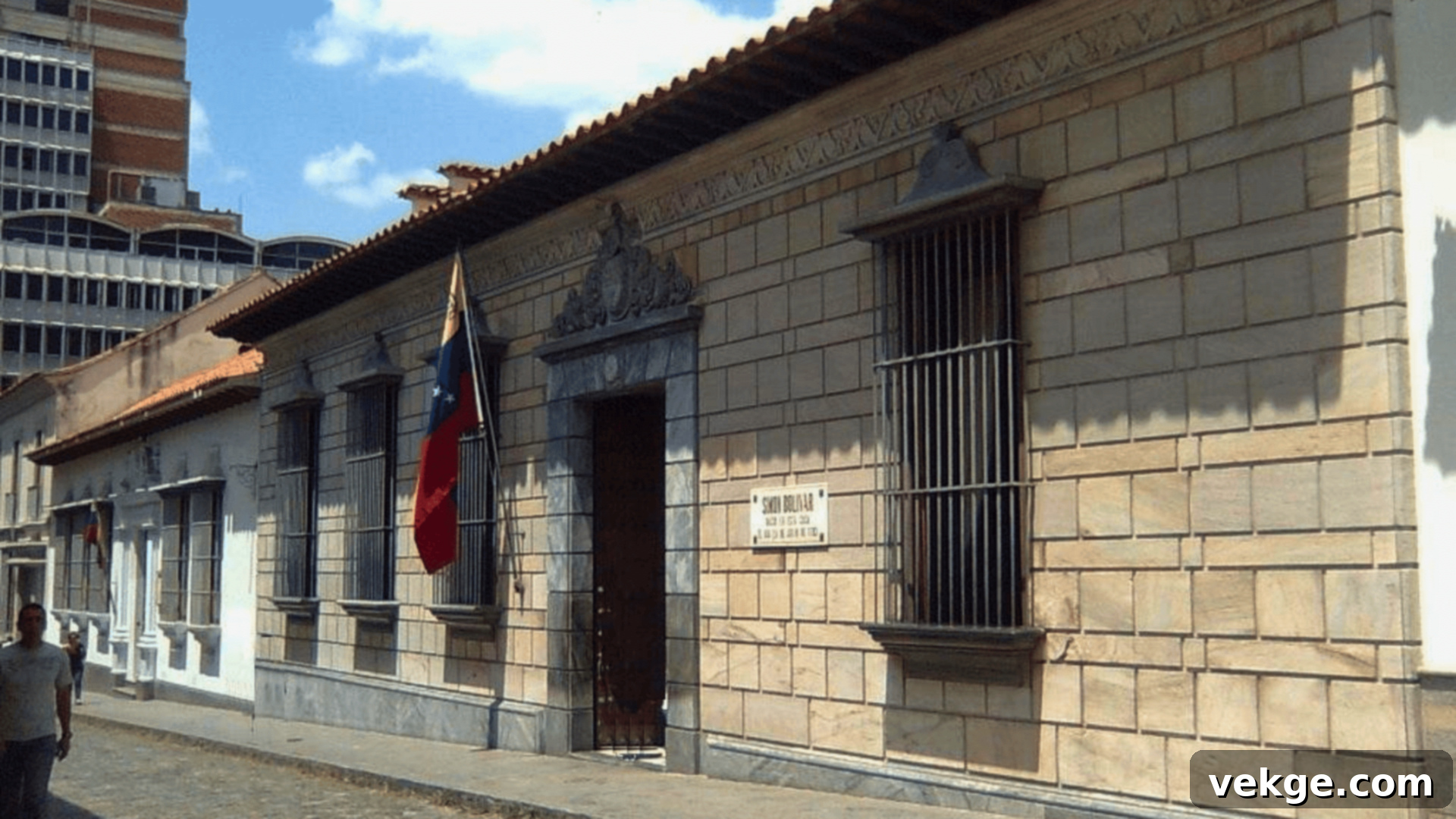
In the historic center of Caracas, the Simón Bolívar Birthplace House is a meticulously preserved colonial mansion where the “Liberator” was born in 1783. Now a historical museum, it offers a fascinating glimpse into Bolívar’s early life and the aristocratic Venezuelan society of the late 18th century. The house features original artifacts, period furniture, and art, including paintings depicting key moments from Bolívar’s life and the independence movement. It serves as an essential pilgrimage site for those wishing to understand the origins of this pivotal figure in South American history.
Best Times to Visit: The dry season, from December to April, is ideal for visiting Caracas and its historical sites like Bolívar’s birthplace. The pleasant weather enhances the experience of walking through the city’s historic core.
Visiting Hours: The museum is typically open daily from 9:00 AM to 4:00 PM. It is particularly active and hosts special commemorative events on significant dates such as Bolívar’s birthday, July 24th, attracting many visitors.
6. Bolívar Square (Plaza Bolívar)

At the very heart of Caracas lies Bolívar Square, the city’s main public space and a site of immense historical and cultural importance. Dominated by an equestrian statue of Simón Bolívar, it is surrounded by magnificent colonial-era buildings, including the Cathedral of Caracas and the Yellow House (the former presidential palace). The square has been a focal point for public life, celebrations, and protests throughout Venezuela’s history, making it a living museum of the city’s heritage. It’s a vibrant place where locals and tourists gather, enjoy the shade of its trees, and soak in the urban atmosphere.
Best Times to Visit: Bolívar Square is a captivating destination year-round. However, the dry season (December to April) provides the most comfortable weather for leisurely strolls and people-watching in this bustling public space.
Visiting Hours: As an open-air public space, Bolívar Square is accessible to the public at all hours, day and night. However, surrounding attractions and businesses typically operate during standard daylight hours.
7. Mochima National Park
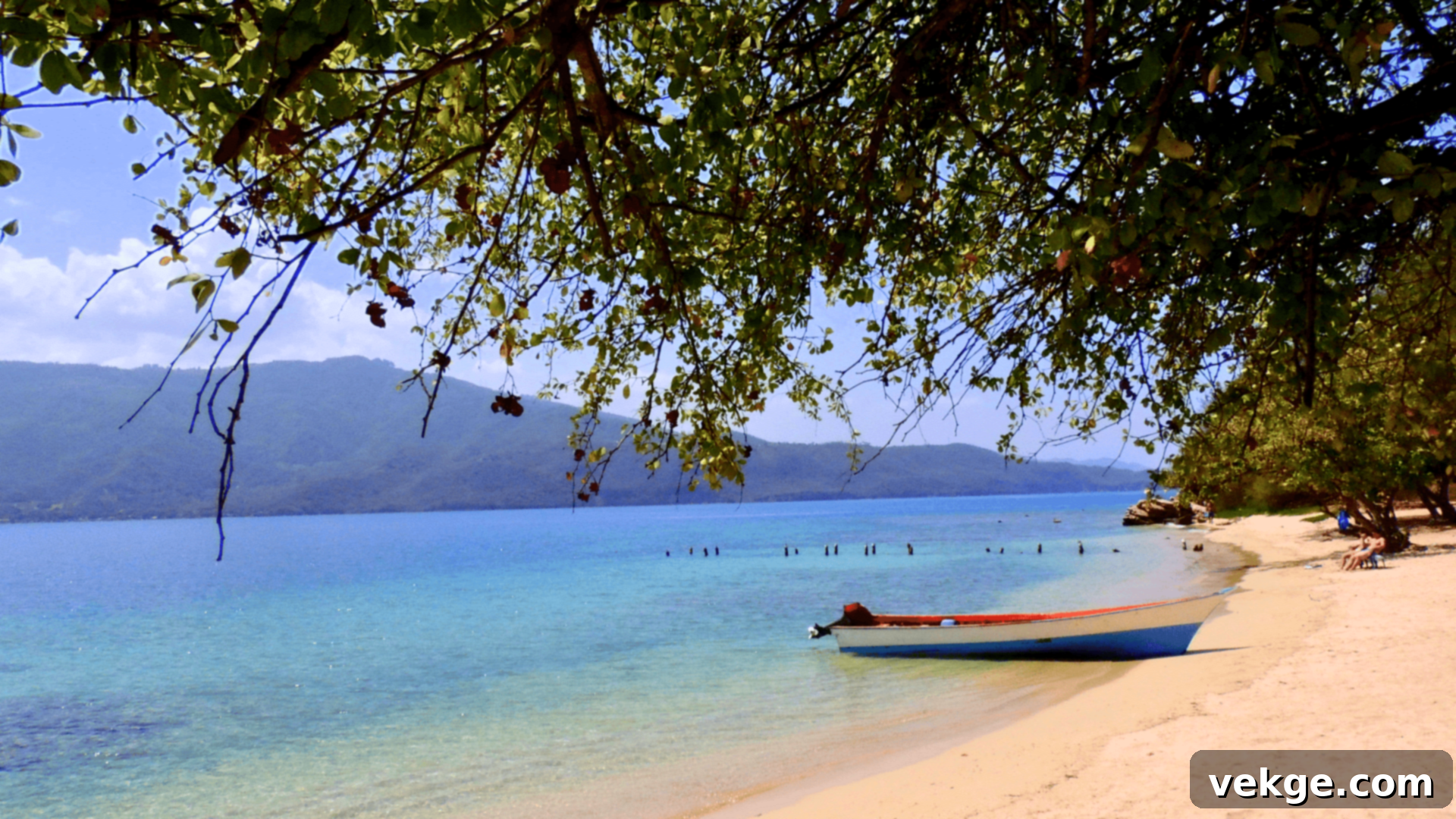
Stretching along the northeastern coast of Venezuela, Mochima National Park is a spectacular marine and coastal park renowned for its stunning beaches, crystal-clear waters, and incredibly diverse marine life. This ecological gem encompasses islands, islets, bays, and mangrove forests, offering a pristine natural playground. It’s a hugely popular destination for snorkeling, diving, and ecotourism, where visitors can explore vibrant coral reefs, spot dolphins and various bird species, or simply relax on secluded coves. Mochima truly offers an excellent and immersive experience of Venezuela’s tropical natural beauty.
Best Times to Visit: The dry season, from December to April, is the prime time to visit Mochima National Park. During these months, the weather is sunny, and the waters are calm and clear, perfect for all marine and beach activities.
Visiting Hours: Mochima National Park is open year-round. While there are no strict entrance hours for the entire park, boat tours and excursions to the islands and beaches are typically available from morning until late afternoon, with guided tours facilitating access to various sites.
8. Cathedral of Barquisimeto (Catedral de Barquisimeto)
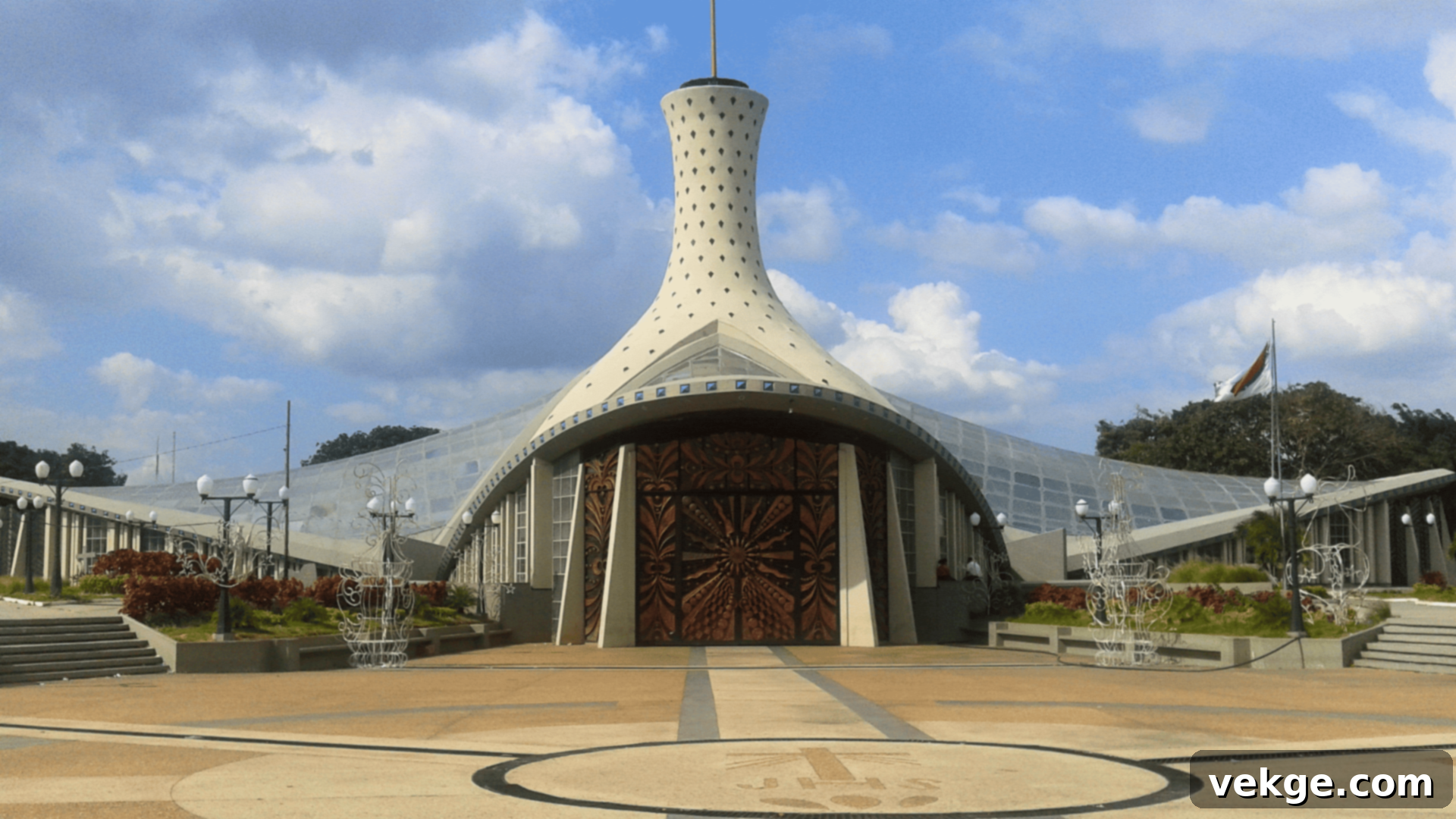
The Cathedral of Barquisimeto is a striking example of modern architecture, setting it apart from many traditional cathedrals. Completed in 1968, its unique design, resembling an inverted flower or a ship, combines contemporary aesthetics with traditional religious function. Designed by architect Jan Bergkamp, the cathedral’s distinctive hyperbolic paraboloid roof and innovative use of concrete and stained glass create a captivating interior space flooded with colorful light. It serves as a central place of worship and a prominent architectural landmark in the city of Barquisimeto, attracting both pilgrims and design enthusiasts.
Best Times to Visit: To enjoy comfortable sightseeing conditions in Barquisimeto, the dry season from December to April is generally recommended. The cathedral is an indoor attraction, so it is accessible regardless of the weather, but surrounding exploration is more pleasant during these months.
Visiting Hours: The Cathedral of Barquisimeto is typically open daily. Standard visiting hours are from 8:00 AM to 12:00 PM and again from 3:00 PM to 6:00 PM, allowing visitors to attend services or admire its architecture.
9. Basilica Menor de Nuestra Señora del Valle (Minor Basilica of Our Lady of the Valley)
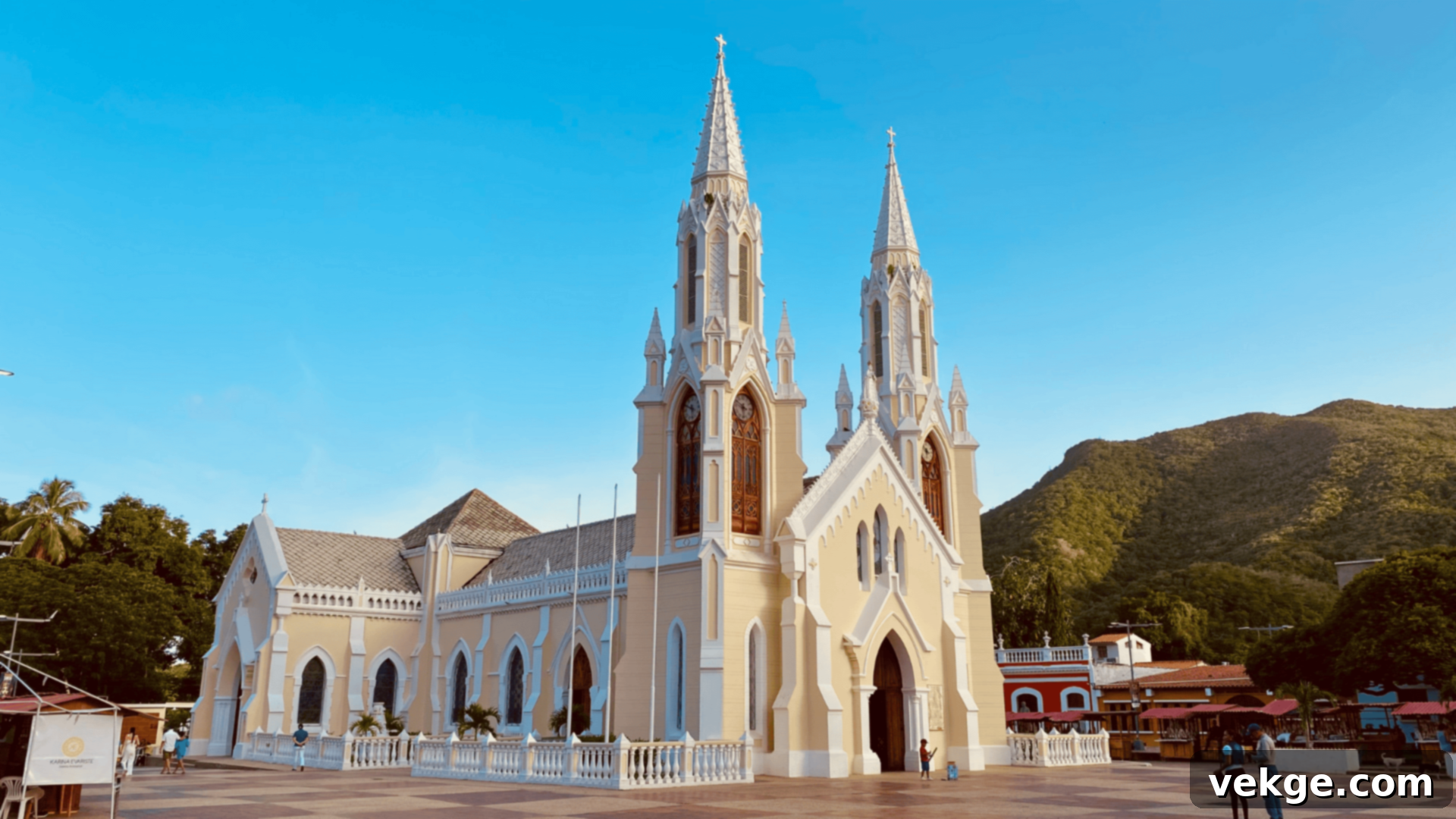
Located on the picturesque Margarita Island, the Minor Basilica of Nuestra Señora del Valle is one of Venezuela’s most important and revered pilgrimage sites. Dedicated to the island’s patron saint, the Virgen del Valle, this basilica draws thousands of devotees annually, especially during her feast day in September. Its impressive neoclassical architecture, with a grand façade and a serene interior, offers a spiritual haven. Beyond its religious significance, the basilica is an architectural landmark and a symbol of faith and cultural heritage for the islanders and Venezuelans nationwide.
Best Times to Visit: The dry season, from December to March, offers the most pleasant weather for visiting Margarita Island and the Basilica. The clear skies and comfortable temperatures are ideal for both religious observances and general sightseeing.
Visiting Hours: The Basilica is generally open daily from 8:00 AM to 6:00 PM, allowing visitors for prayer, reflection, and admiration of its beauty. Special services and events are held frequently, particularly during major religious holidays and the annual pilgrimage.
10. San Carlos de Borromeo Fortress (Castillo de Pampatar)
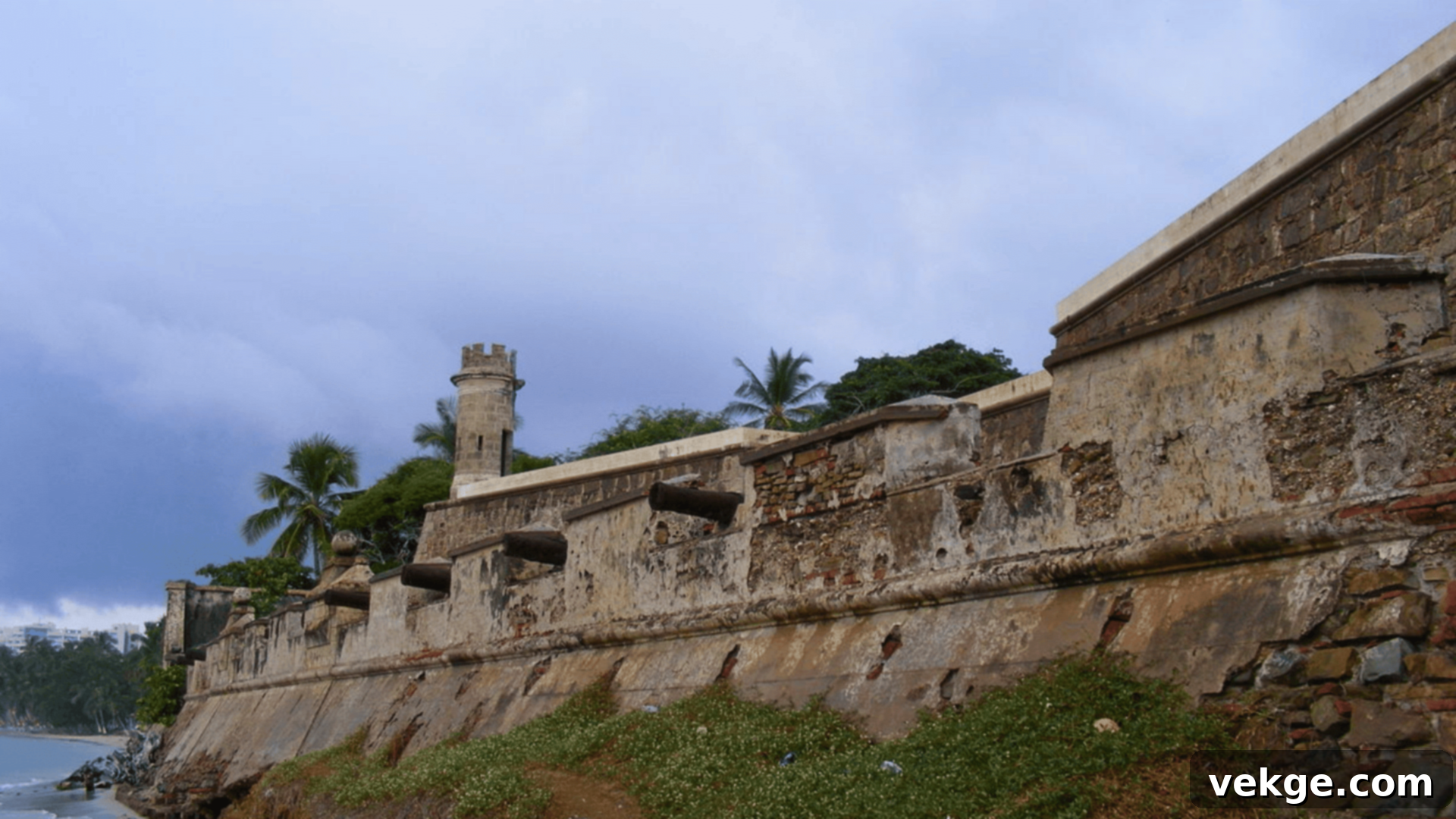
Perched majestically on a hill overlooking Pampatar Bay on Margarita Island, the San Carlos de Borromeo Fortress is a formidable historical monument. Built by the Spanish in the 17th century, this star-shaped fortress was strategically vital in protecting the island from pirate attacks and rival colonial powers. Today, the well-preserved fortress serves as a fascinating historical site where visitors can explore its bastions, courtyards, and dungeons, imagining the battles once fought within its walls. It also offers breathtaking panoramic views of the bay, Pampatar town, and the Caribbean Sea, making it a favorite spot for history buffs and photographers alike.
Best Times to Visit: The dry season, from December to April, provides excellent weather for exploring the outdoor grounds of the fortress. The cooler temperatures make walking around the historical site more comfortable.
Visiting Hours: The San Carlos de Borromeo Fortress is typically open daily from 9:00 AM to 4:00 PM, allowing ample time for exploration and enjoying the spectacular views.
11. Monumento Nacional y Patrimonio Cultural “La Flor de Venezuela” (The Flower of Venezuela)
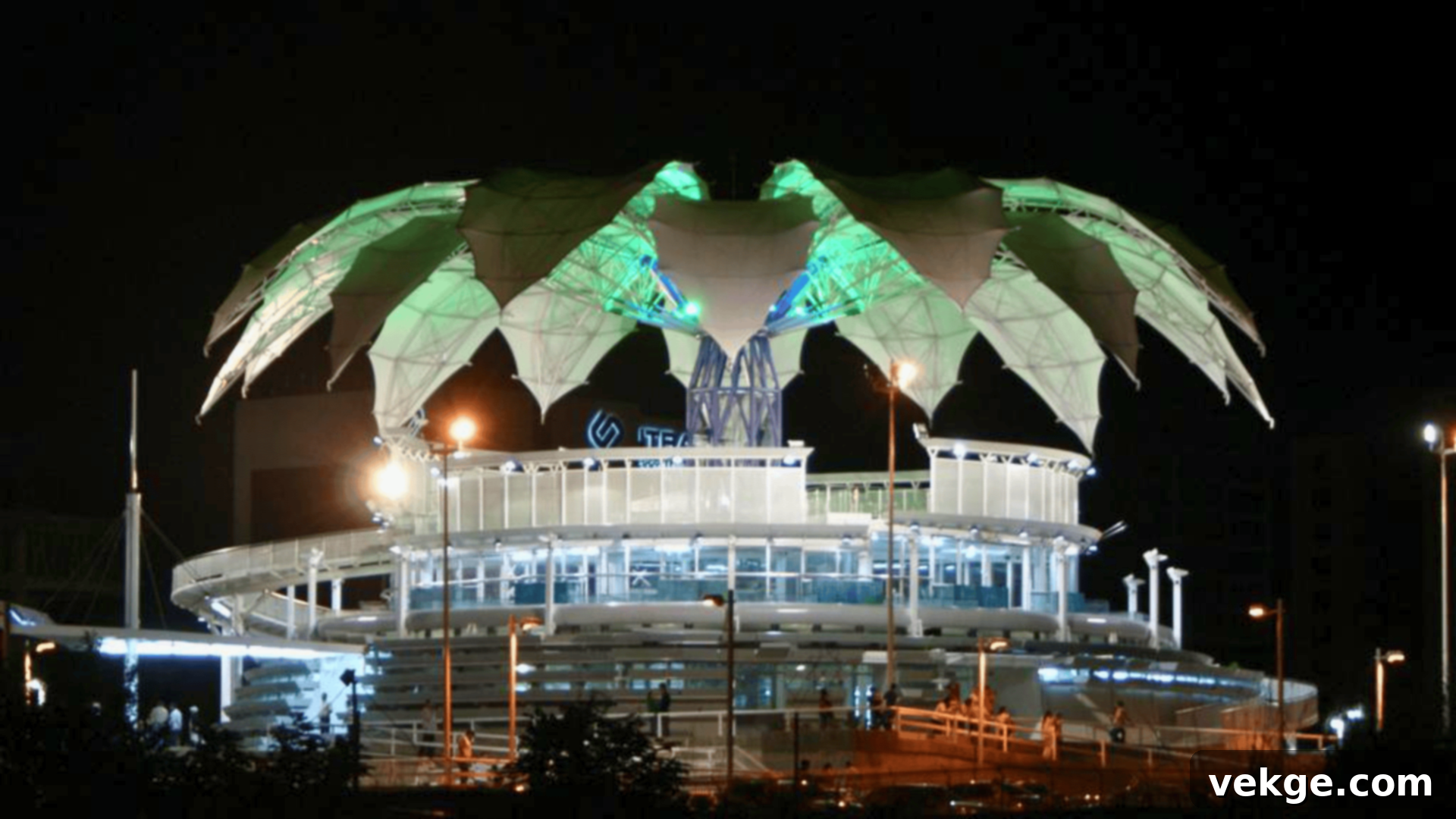
Located in Barquisimeto (not Caracas, as originally stated in the input, a common confusion), “La Flor de Venezuela” is an architectural masterpiece and a profound national symbol. Designed by the renowned Venezuelan architect Fruto Vivas, this striking flower-shaped structure features 16 petals that open and close, mimicking the bloom of a “flor de cardón,” a native plant. The monument, originally built for the Hannover Expo 2000, now serves as a cultural center and botanical garden, celebrating Venezuela’s rich cultural heritage and natural beauty. It’s an innovative fusion of art, architecture, and ecology.
Best Times to Visit: This monument is a magnificent attraction year-round. However, visiting during the dry season, particularly from December to April, ensures more pleasant weather for exploring the surrounding gardens and enjoying outdoor events.
Visiting Hours: “La Flor de Venezuela” is typically open year-round, with specific visiting hours often aligning with cultural events or exhibitions, generally during daylight hours. It’s advisable to check current schedules for any special programming.
12. Monument to La Paz (Monumento a la Paz)
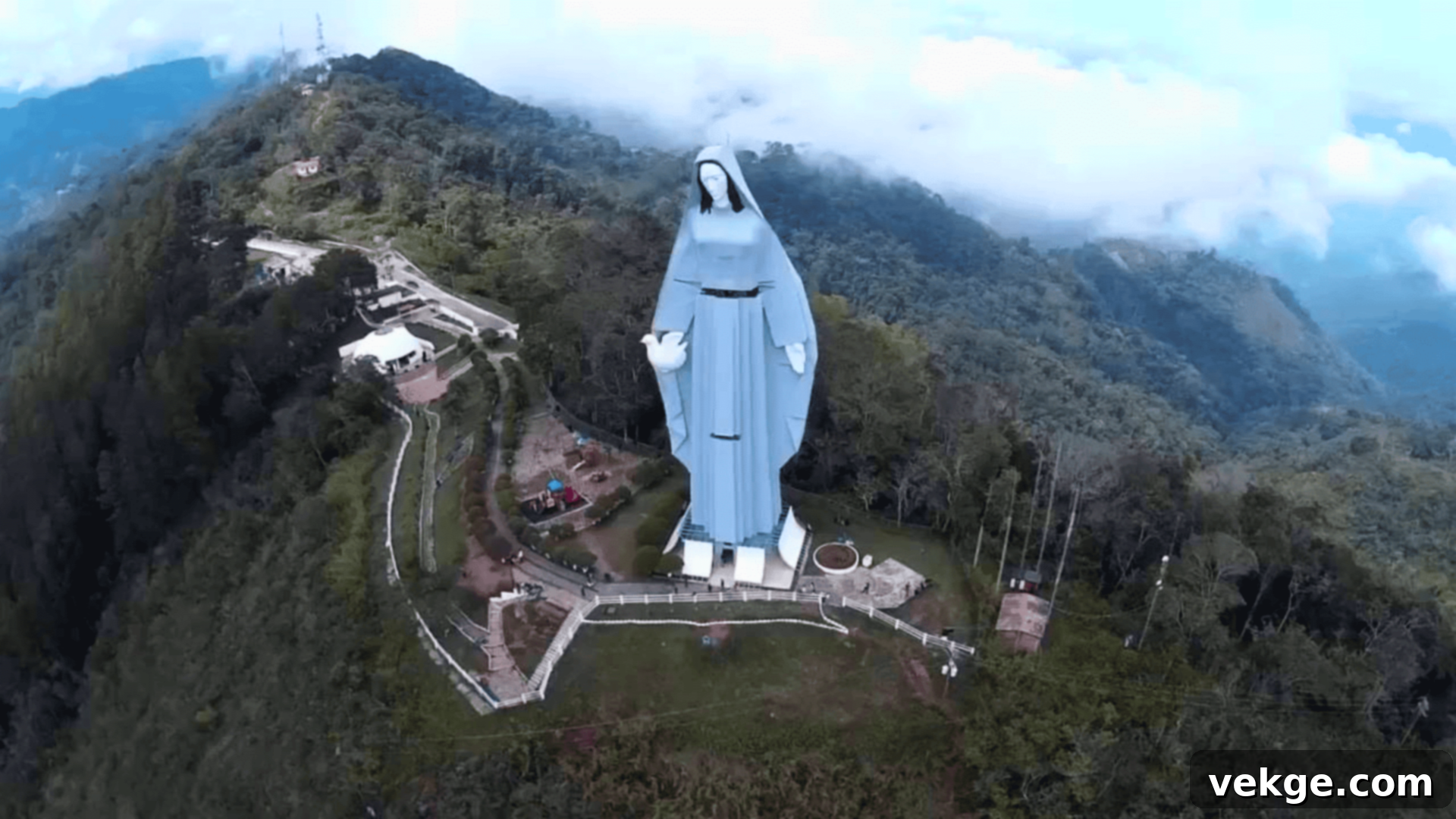
The Monument to La Paz, majestically situated on a hill overlooking the city of Trujillo (not Caracas, another input correction), is a colossal statue dedicated to peace. Standing at an impressive 46.72 meters (153 feet) tall, it is the tallest statue in the Americas and the fifth tallest in the world, surpassing even the Statue of Liberty. Conceived by sculptor Manuel de la Fuente, it commemorates the Treaty of Armistice and Regularization of War signed by Simón Bolívar in Trujillo. The monument is a powerful symbol of unity and tranquility for the Venezuelan nation, offering profound views of the surrounding valleys and mountains from its various viewpoints.
Best Times to Visit: The Monument to La Paz is best visited during the dry season, which runs from December to April. This period offers clearer skies for panoramic views and more comfortable conditions for exploring the monument’s exterior and various levels.
Visiting Hours: The monument is open year-round, typically during daylight hours. Access to the internal viewing platforms usually has specific operating times, which can vary, so it’s best to confirm locally.
13. Campo Carabobo Monument
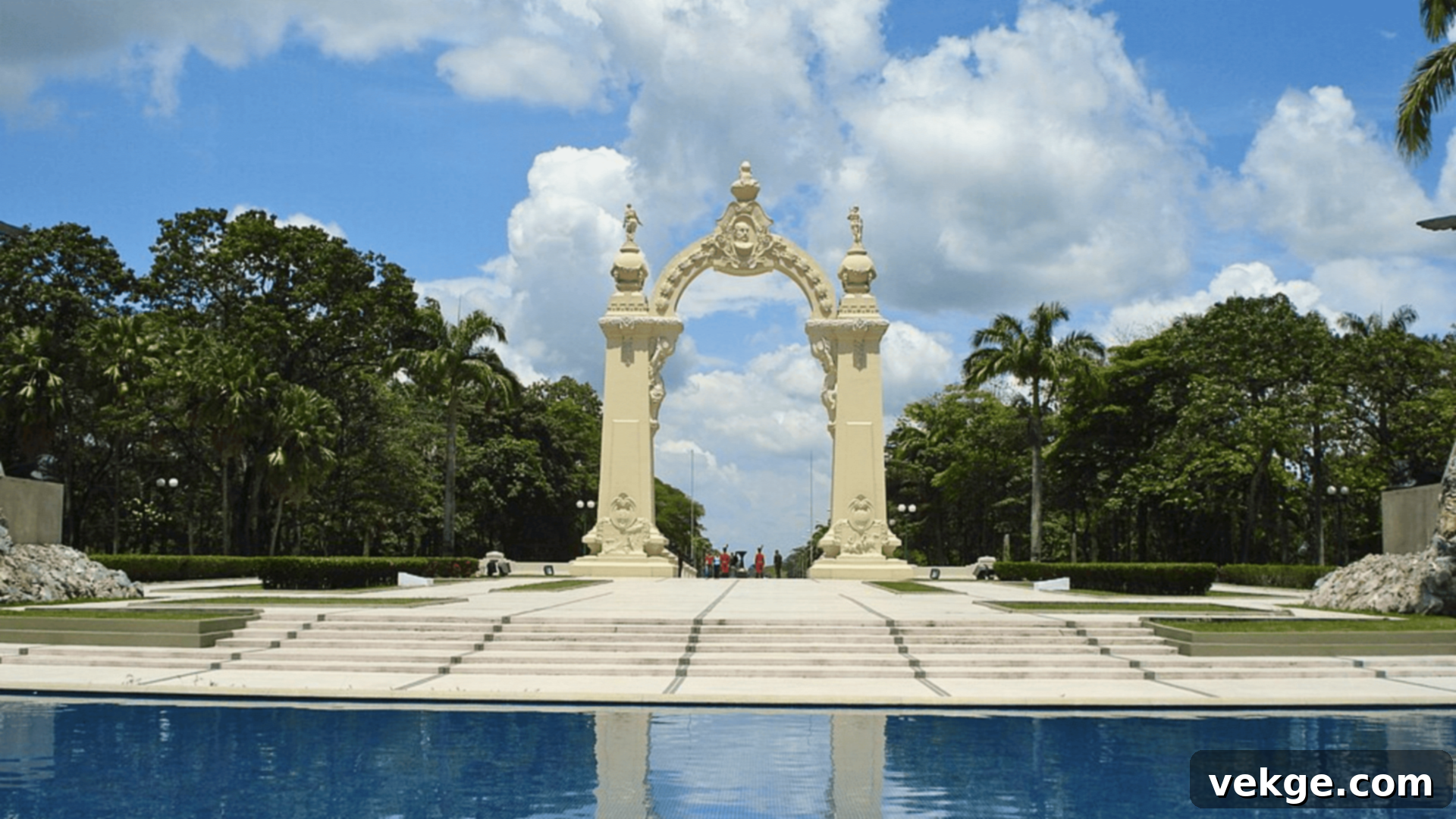
The Campo Carabobo Monument stands on the historic plains of Carabobo, commemorating the pivotal Battle of Carabobo, which took place on June 24, 1821. This decisive victory, led by Simón Bolívar, sealed Venezuela’s independence from Spanish rule. The monumental complex includes a triumphal arch, a statue of Bolívar, and a series of sculptures depicting the heroes and key moments of the battle. It’s a sacred site for Venezuelans, often hosting military parades and ceremonies, and serves as a powerful symbol of national sovereignty and the sacrifices made for freedom. Visitors can walk the fields where history was made and reflect on the bravery of the independence fighters.
Best Times to Visit: To fully appreciate the outdoor monument and the surrounding historic landscape, the dry season (December to April) is recommended. The cooler, less humid weather makes exploration more enjoyable.
Visiting Hours: The Campo Carabobo Monument is generally open daily from 9:00 AM to 5:00 PM, allowing visitors to explore the extensive grounds and learn about this crucial historical event.
14. Faro de Pampatar (Pampatar Lighthouse)
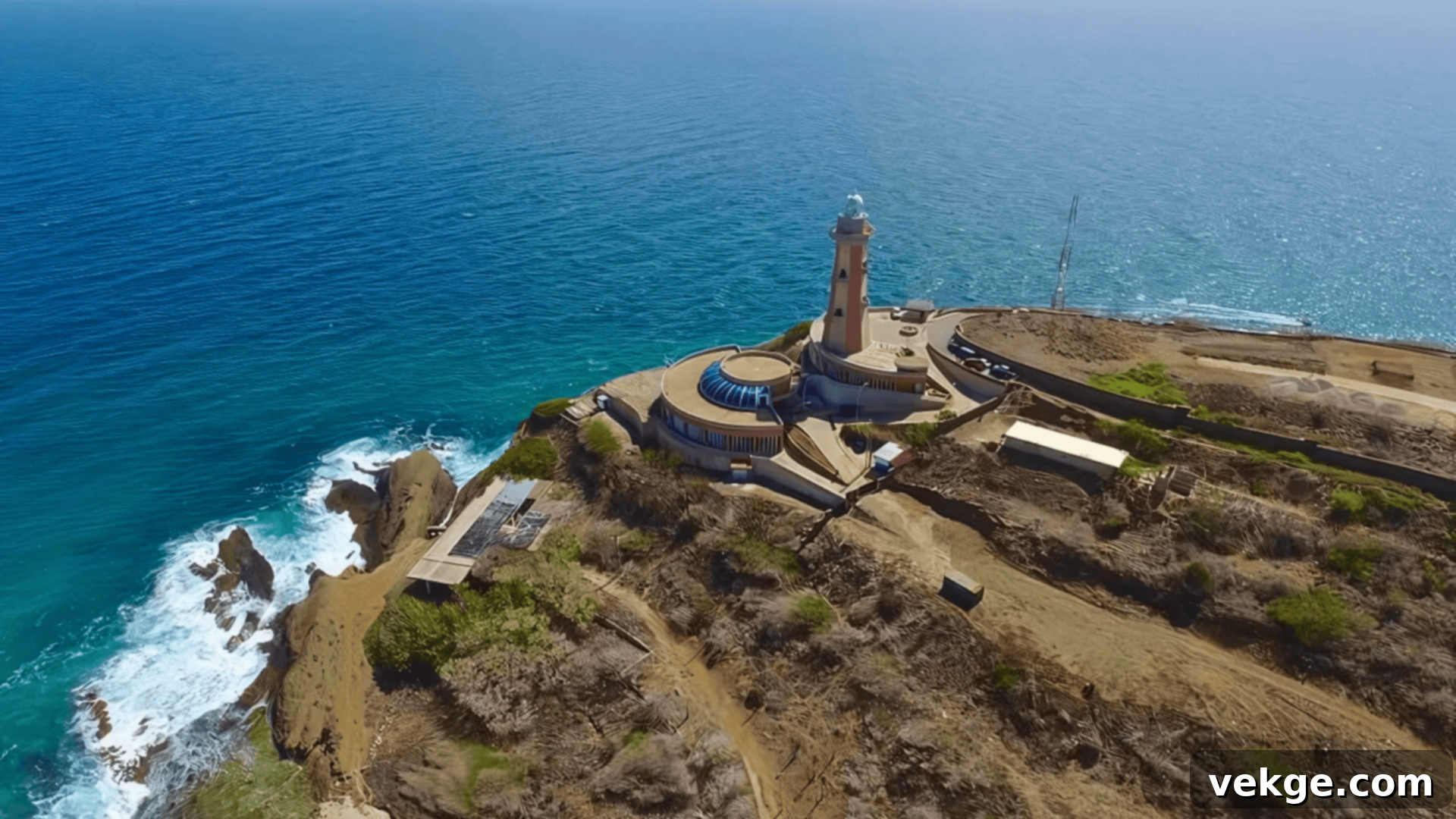
Located on Margarita Island, the Pampatar Lighthouse is a charming and historic beacon that has guided ships entering Pampatar Bay for centuries. While perhaps not as grand as some other landmarks, its historical significance and the picturesque views it offers make it a noteworthy stop. The lighthouse stands as a testament to the maritime heritage of the island and provides spectacular panoramic views of the coastline, the azure waters of the Caribbean, and the bustling town of Pampatar. It’s a perfect spot for photography, especially during sunrise or sunset, and a tranquil place to watch the boats go by.
Best Times to Visit: The dry season, from December to March, is ideal for visiting the lighthouse. The clear weather ensures excellent visibility for enjoying the coastal views and photography.
Visiting Hours: The Pampatar Lighthouse is accessible year-round. It is best visited during daylight hours to fully appreciate the views, though evening visits can offer stunning sunset photo opportunities.
15. Fortín de La Galera (Fort La Galera)
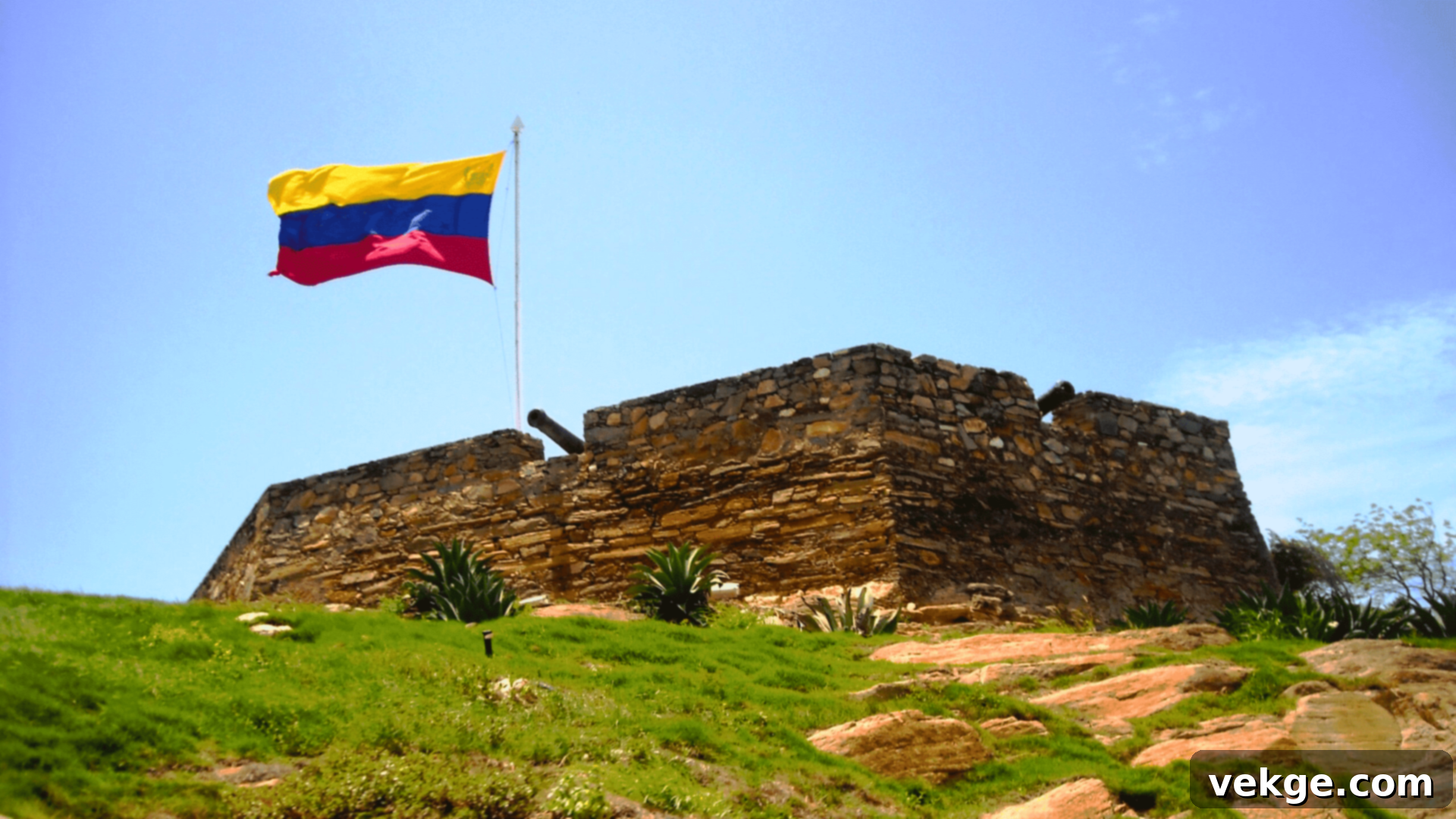
Perched dramatically on a rocky promontory near Juan Griego Bay on Margarita Island, Fortín de La Galera is another historic fort that played a crucial role in defending the island during colonial times. While smaller than the San Carlos de Borromeo Fortress, its strategic position and the history of fierce battles fought here make it equally compelling. The site now offers visitors a captivating blend of historical insights into Spanish colonial defenses and unparalleled panoramic views, particularly famous for its breathtaking sunsets over the Caribbean Sea. It’s a testament to the island’s resilient past and natural beauty.
Best Times to Visit: The dry season, from December to April, offers the best conditions for exploring the outdoor fort and enjoying the stunning sunset views without the interruption of rain.
Visiting Hours: Fortín de La Galera is generally open daily from 9:00 AM to 5:00 PM, allowing visitors ample time to explore the ruins, read historical plaques, and witness the famous sunsets.
16. Los Aleros
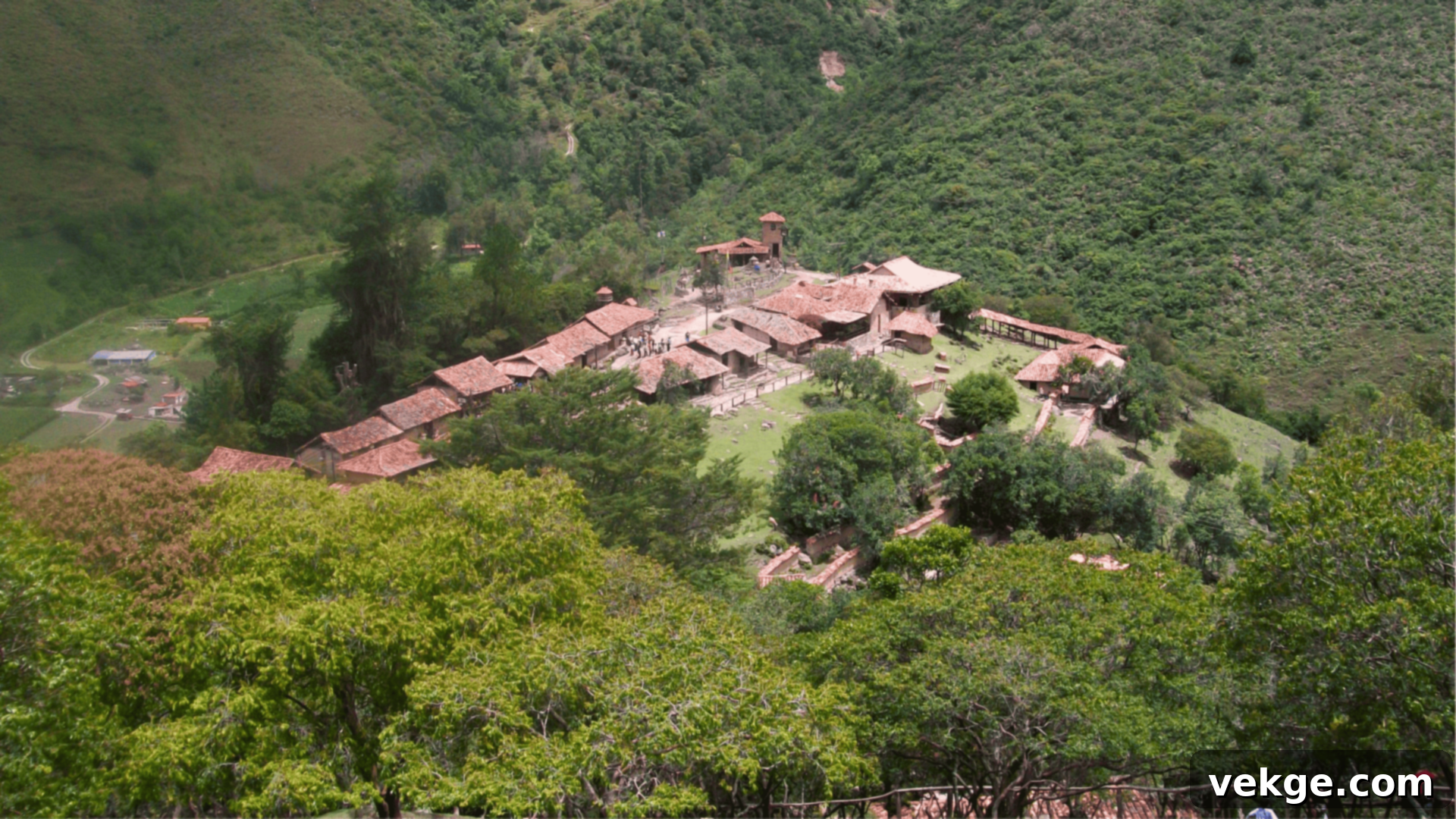
Located in the cool, mountainous region of Mérida, Los Aleros is a unique and enchanting cultural theme park that transports visitors back to the Venezuela of the 1930s. The park meticulously recreates traditional Venezuelan rural life, complete with period architecture, customs, and activities. Visitors can interact with actors in traditional attire, sample regional cuisine, and observe old crafts, offering an immersive glimpse into the country’s rich rural heritage and folklore. It’s an educational and entertaining experience that celebrates the nostalgia and simpler times of Venezuelan provincial life, particularly popular with families.
Best Times to Visit: The dry season in Mérida, from December to April, is most favorable for visiting Los Aleros. The comfortable weather is ideal for outdoor exploration within the park and enjoying the various interactive attractions.
Visiting Hours: Los Aleros typically operates daily from 8:00 AM to 5:00 PM. It is advisable to arrive earlier in the day to fully experience all the attractions and shows offered within the park.
17. Pico Bolívar
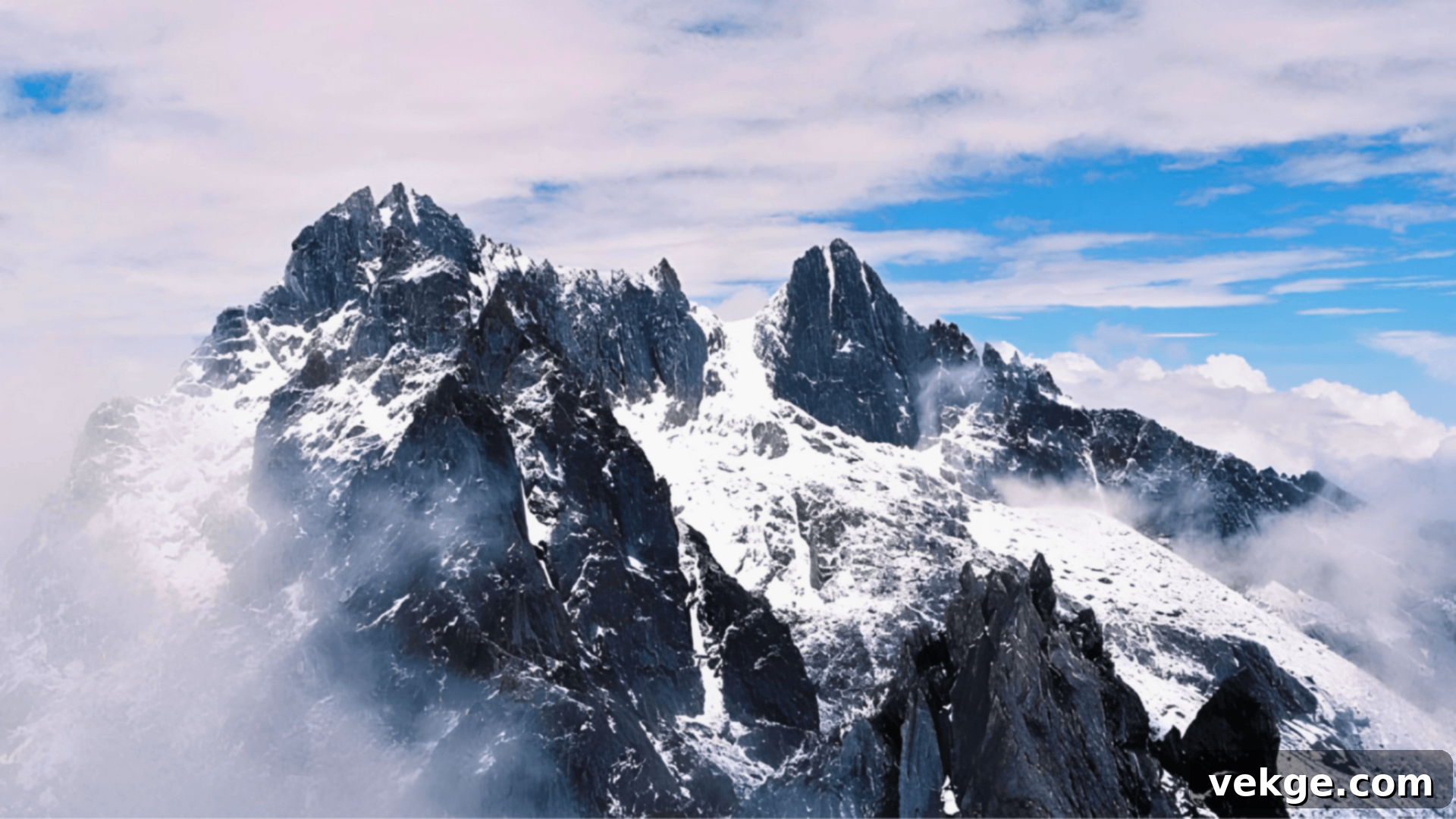
Pico Bolívar stands as the undisputed highest mountain peak in Venezuela, majestically rising to 4,978 meters (16,335 feet) within the Sierra Nevada National Park in the Andes. Its snow-capped summit, though diminishing due to climate change, offers an incredible challenge for experienced mountaineers and presents breathtaking, expansive views of the surrounding Andean landscape. While the famous Mérida Cable Car (Teleférico Mukumbarí) no longer reaches the very summit, it provides access to high-altitude stations, allowing visitors to experience the grandeur of the Venezuelan Andes. The trek to the top is an arduous but rewarding expedition, showcasing diverse ecosystems and unparalleled natural beauty.
Best Times to Visit: The dry season, from December to April, is the most opportune time for attempting to climb Pico Bolívar or for taking the cable car to its highest accessible stations. Conditions are generally more stable, though high-altitude weather can be unpredictable at any time.
Visiting Hours: As a natural mountain peak, there are no specific visiting hours. However, guided treks to the summit typically take 3 to 5 days, requiring careful planning and permits. The Mérida Cable Car operates during specific hours, which should be checked in advance.
18. La Basílica de Nuestra Señora de Chiquinquirá y Cristo de Aranza
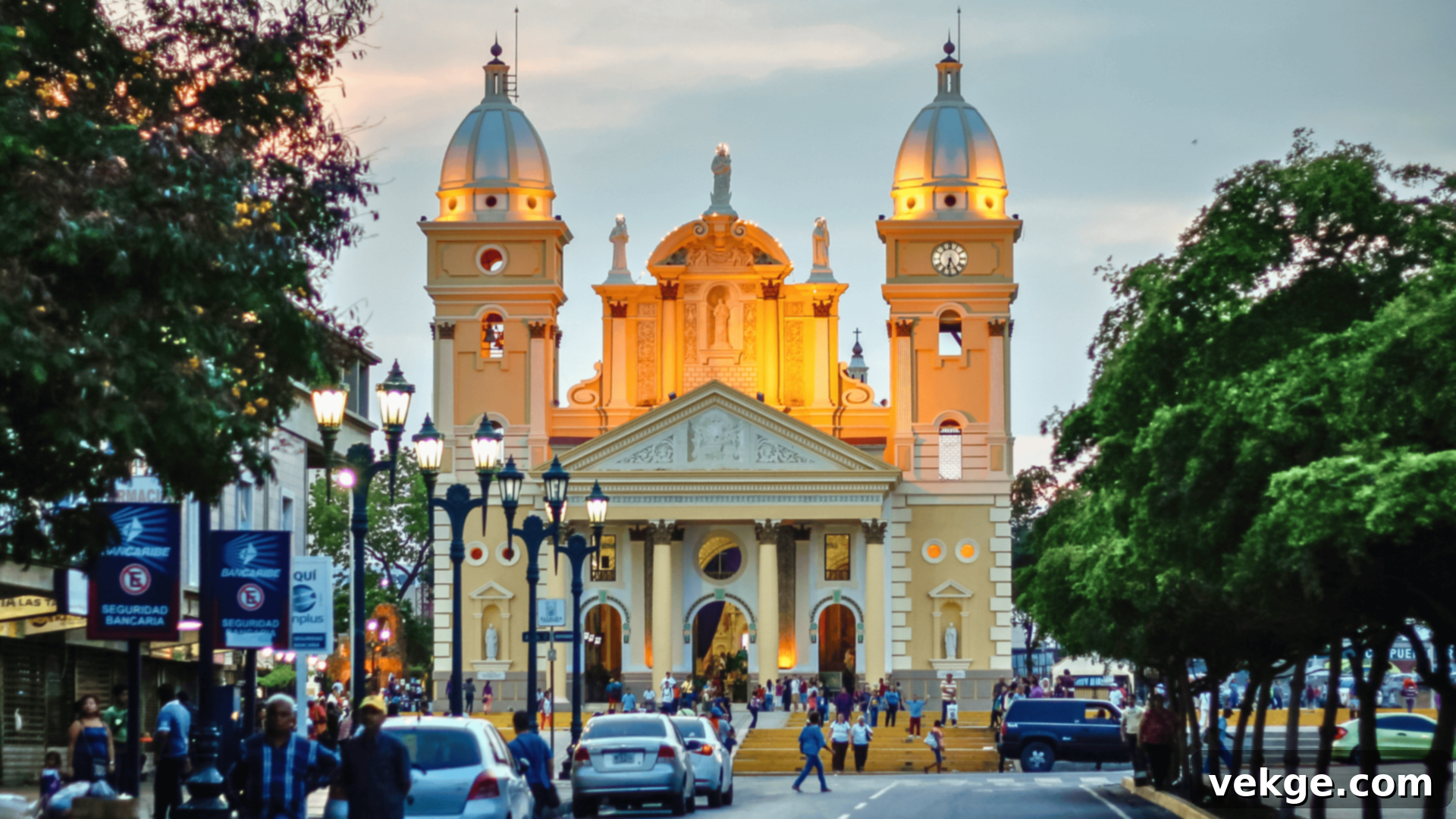
Located in the vibrant city of Maracaibo, this basilica is one of Venezuela’s most significant pilgrimage sites, particularly revered in the Zulia state. It is dedicated to the Virgen de Chiquinquirá, affectionately known as “La Chinita,” the patroness of Zulia. The basilica features remarkable architecture, a grand façade, and an interior adorned with beautiful religious art. The devotion to La Chinita is a cornerstone of Zulian culture, with grand celebrations and a renowned fair (Feria de La Chinita) held annually in November. The basilica stands as a testament to deep-seated faith and a rich cultural heritage.
Best Times to Visit: To experience Maracaibo and the Basilica in more comfortable conditions, the dry season, from December to March, is recommended. Temperatures are generally milder, though Maracaibo is known for its heat year-round.
Visiting Hours: The Basilica is typically open daily from 7:00 AM to 5:00 PM, welcoming parishioners and visitors alike for mass, prayer, and quiet reflection. Special services and events are common, especially during religious festivals.
19. Parque Nacional Morrocoy (Morrocoy National Park)
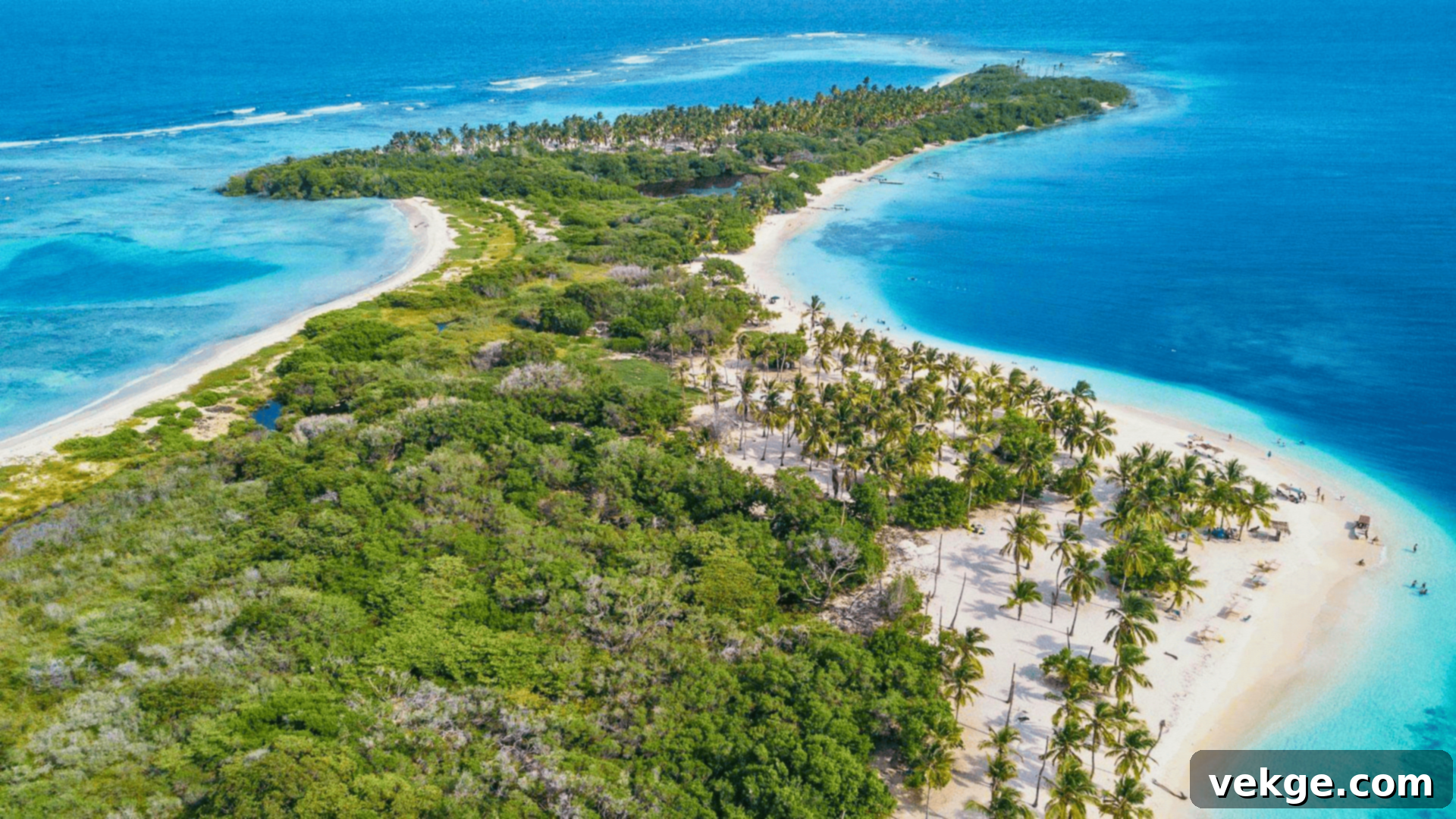
Situated on Venezuela’s northwestern coast, Morrocoy National Park is a true Caribbean paradise, renowned for its spectacular beaches, picturesque cays (small sandy islands), and incredibly clear, calm waters. This coastal and marine park is a vibrant ecosystem of mangroves, coral reefs, and diverse marine life, making it a dream destination for snorkelers and divers. Visitors can hop between various cays like Cayo Sombrero and Cayo Sal, each offering unique beauty and excellent spots for swimming and sunbathing. It’s a perfect retreat for those seeking relaxation, natural beauty, and exciting water adventures in a tropical setting.
Best Times to Visit: The optimal time to visit Morrocoy National Park is from December to April, which corresponds to the dry season. During these months, the weather is consistently sunny, and the sea is calm, providing the most favorable conditions for all outdoor and water activities.
Visiting Hours: Morrocoy National Park is accessible year-round. Boat tours and excursions to the cays typically operate during daylight hours, usually starting in the morning and returning in the late afternoon. It’s an open park, but access to specific areas may be managed by local tour operators.
20. Simón Bolívar’s Mausoleum (Mausoleo de Simón Bolívar)
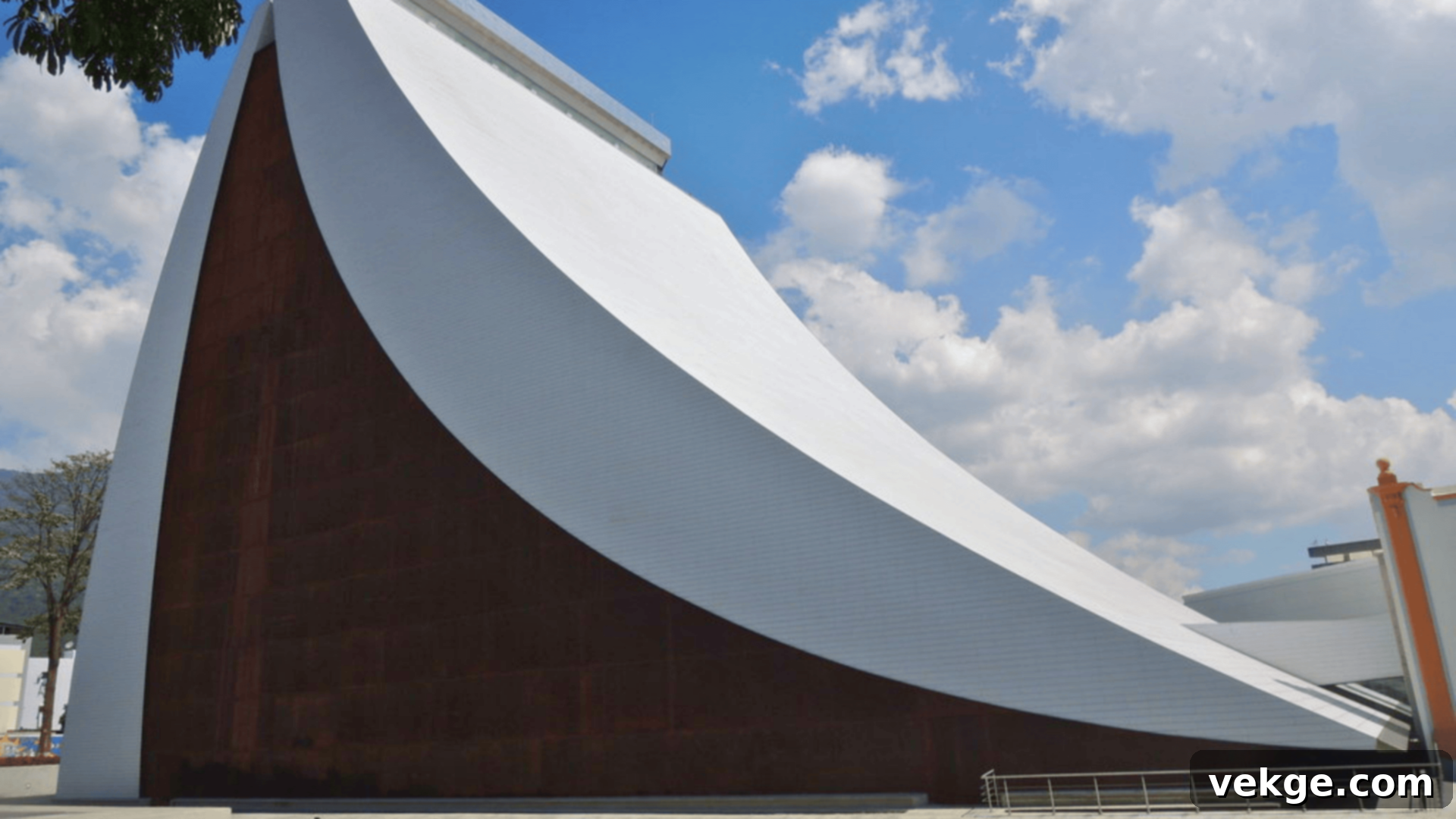
An architectural marvel in Caracas, Simón Bolívar’s Mausoleum is a modern, grand structure located adjacent to the National Pantheon. Completed in 2013, it houses the remains of Venezuela’s liberator, Simón Bolívar, in a more prominent and symbolic resting place designed to reflect his immense importance to the nation. The mausoleum’s soaring white marble walls and minimalist design create an atmosphere of reverence and awe. It serves as a powerful national monument and historical site, inviting visitors to reflect on Bolívar’s legacy and the trajectory of Venezuelan independence. The design aims to provide a solemn and uplifting tribute to the national hero.
Best Times to Visit: For a comfortable visit to Caracas and its historical monuments, including the Mausoleum, the dry season (December to April) is ideal, offering pleasant temperatures for exploring the city center.
Visiting Hours: The Mausoleum is typically open from Monday to Friday, from 9:00 AM to 4:00 PM. It is sometimes closed on weekends or holidays, so checking in advance is recommended.
21. Quebrada de Jaspe (Jasper Creek)
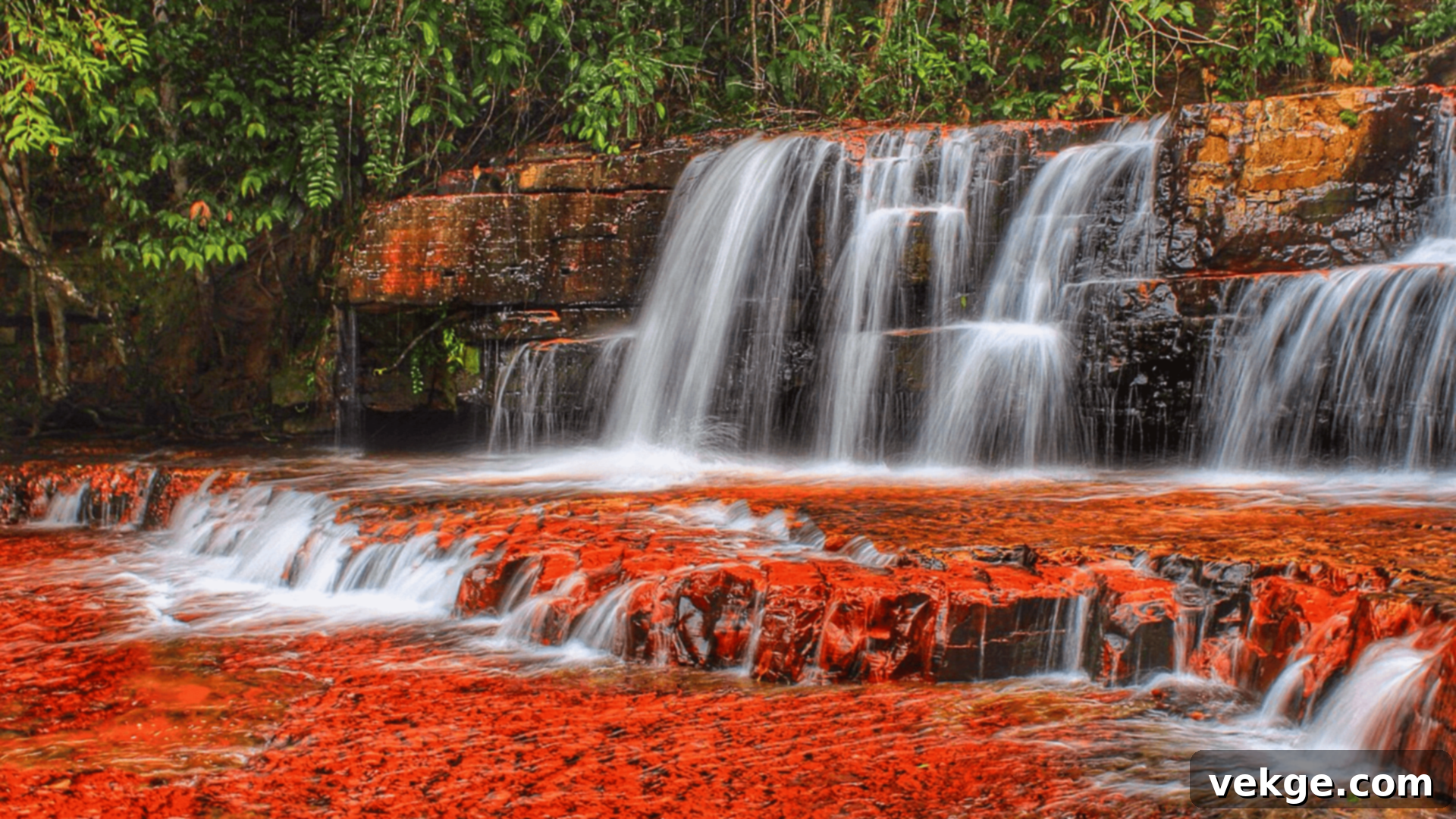
Deep within the ancient landscapes of Canaima National Park, Quebrada de Jaspe is a truly unique natural wonder. This stunning creek is famous for its vibrant red jasper riverbed, which gives the flowing water a mesmerizing reddish hue. The smooth, polished jasper creates a beautiful contrast with the clear, cool water, making it a striking and photogenic site. Visitors can walk along the jasper bedrock and immerse themselves in the pristine waters, experiencing a natural artwork unlike any other. It’s a testament to the geological wonders hidden within Venezuela’s Gran Sabana and an unforgettable sensory experience.
Best Times to Visit: The dry season, from December to March, is generally the best time to visit Quebrada de Jaspe. The lower water levels can make the jasper bedrock more visible and accessible, and the weather is typically more predictable for exploring the Gran Sabana.
Visiting Hours: Quebrada de Jaspe is part of Canaima National Park and is accessible year-round, typically as part of guided tours during daylight hours. There are no fixed “opening” hours, but it’s essential to visit with a guide and during safe daylight conditions.
22. Isla Margarita (Margarita Island)
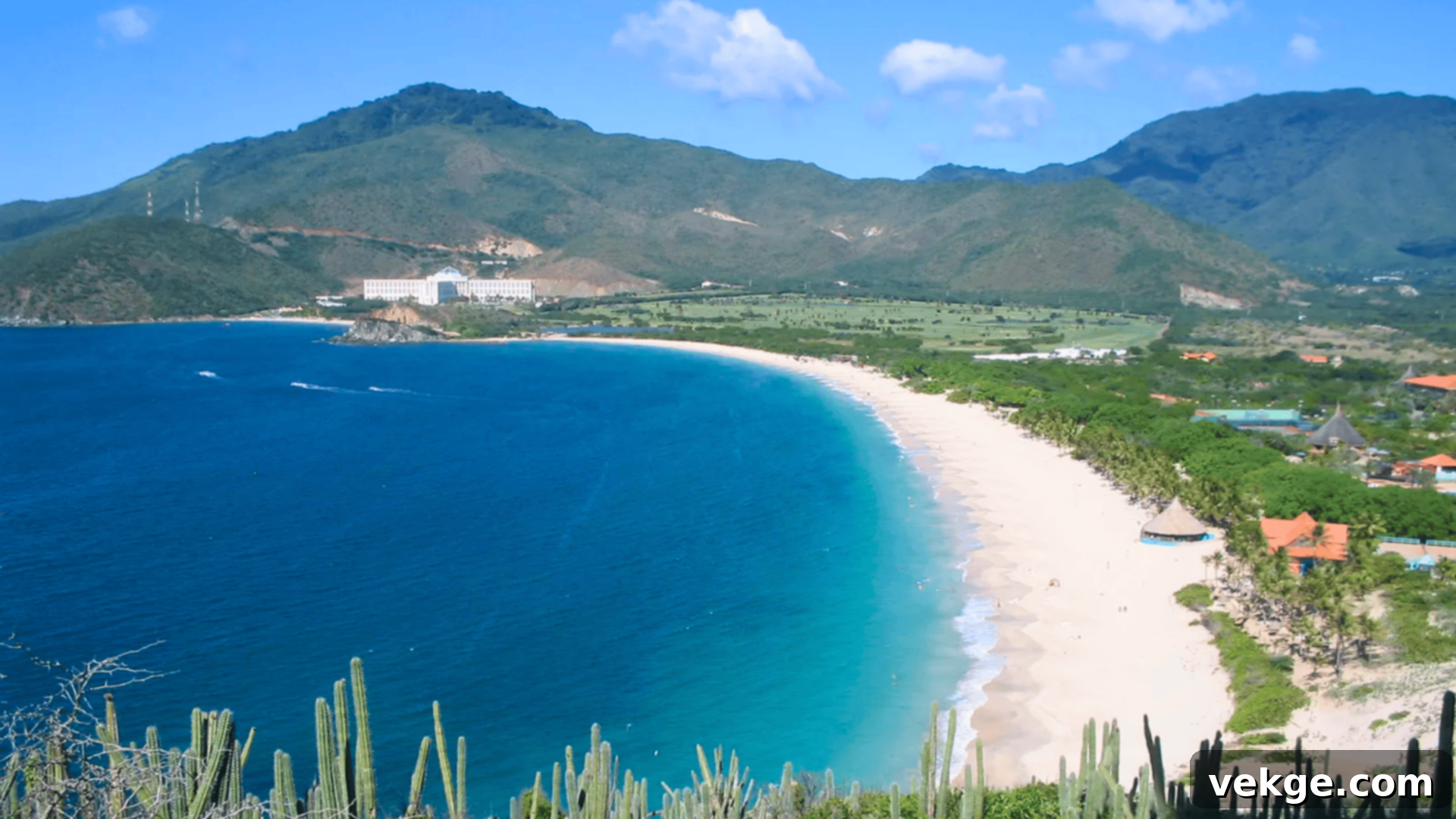
Isla Margarita, often dubbed the “Pearl of the Caribbean,” is Venezuela’s most popular island destination and a vibrant hub for tourism. Renowned for its stunning sandy beaches like Playa El Yaque (famous for windsurfing and kitesurfing) and Playa Parguito, its clear turquoise waters, and its lively local culture, the island offers a diverse range of experiences. Beyond the beaches, Margarita boasts historical towns, duty-free shopping, delicious seafood, and a vibrant nightlife. It’s a destination that perfectly blends relaxation with adventure and cultural immersion, attracting both international visitors and Venezuelan holidaymakers seeking a quintessential Caribbean getaway.
Best Times to Visit: The dry season, from December to April, is widely considered the best time to visit Isla Margarita. This period ensures abundant sunshine, minimal rainfall, and ideal conditions for beach activities, water sports, and exploring the island’s many attractions.
Visiting Hours: As an entire island, Isla Margarita is “open” year-round. Individual attractions, shops, restaurants, and tour operators will have their specific operating hours, with most activities available during daylight hours and into the evening for dining and entertainment.
Conclusion
From the colossal plunge of Angel Falls to the serene shores of the Los Roques Archipelago, and from the ancient plateaus of Mount Roraima to the profound historical resonance of Simón Bolívar’s memorials, Venezuela’s landmarks are a testament to an incredible heritage and breathtaking landscapes. Each site tells a story, weaving together threads of natural wonder, human endeavor, and profound cultural significance.
We hope this comprehensive guide has not only provided you with essential insights into the best places to visit in Venezuela but has also ignited your curiosity and passion for this magnificent South American nation. Whether you’re meticulously planning an adventure of a lifetime or simply satisfying a thirst for knowledge, these destinations promise enriching experiences.
With careful planning and an open heart, your visit to Venezuela can be truly unforgettable. Imagine immersing yourself in its vibrant history, marveling at its unparalleled natural beauty, and creating unique memories that will last a lifetime. Venezuela beckons with a rich tapestry of sights, sounds, and stories.
Keep exploring, keep dreaming, and discover firsthand what makes Venezuela so uniquely special and captivating. Are you ready to embark on this journey or perhaps delve deeper into the wonders of these incredible landmarks? Feel free to share your thoughts, plans, or past experiences in the comments section below!
